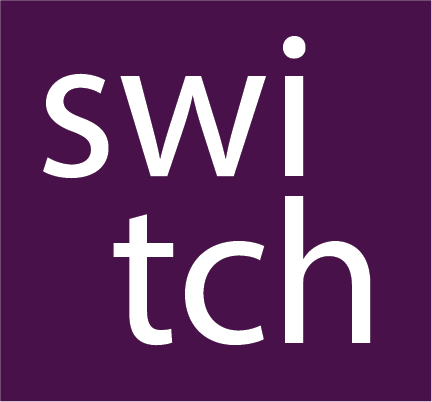Recently I had a chance to catch up with the brilliant and insightful Valdis Krebs, who does all sorts of fascinating work on social network analysis. After one if his talks in Europe, an attendee approached him and posed this query: “It’s great to see what an organization looks like, but what does it sound like?” Valdis and I chatted about this for a bit and bandied about various ideas. Is it possible to map organizational networks to midi notes? How does the overall sound of a high functioning organization compare to that of a lesser evolved company?
Those are intriguing questions, and I look forward to further exploration. In the meantime, I’ve put together a series of articles about ways to “hear” what your organization sounds like. In Part I, we’ll take a look at equalization and the specific frequencies of your organization. To give a very quick overview of audio equalization, or EQ (not to be confused with emotional quotient), we must first define the range of human hearing. Our ears hear frequencies between 20Hz and 20,000Hz. This varies between individuals, and the high end of the spectrum shrinks as we age. For purposes of this article, we will oversimplify the labeling of these frequencies as follows:
Bass (20-399Hz)
Midrange (400-3,999Hz)
Treble (4,000-20,000Hz)
Since the Queen biopic Bohemian Rhapsodyis so popular, and because Freddie Mercury has such a great voice, we’re going to use that song for demonstration purposes. First, let’s take a listen to how this section of Bohemian Rhapsody sounds with the full frequency range represented:
Laying the Groundwork
Who are the people in your organization that you can’t live without? The folks that keep everyone grounded and connected? These people work tirelessly, often behind the scenes, to ensure that everything stays on track. They are comfortable doing the heavy lifting and enjoy setting others up for success. These are your bass frequencies, hustling along between 20 and 400Hz. They typically don’t call attention to themselves, but it’s very obvious when they aren’t present.
Let’s have a listen to what happens when we cut the bass frequencies. The mix becomes tinny. Dull. Lifeless.
Conversely, what happens when we boost the bass frequencies? Mud. Loss of clarity.
Another interesting note about bass frequencies: If there are too many instruments or voices competing in that sonic space, everything goes to mush. It is the same for your organization. There are a few trusted folks that are holding down the fort. These people can be anyone from the CEO to the janitor — it’s less role-based and more person-based. Know who these people are and let them be the driving force that pushes your organization forward. Equally important, keep others from venturing down to the bottom frequencies and muddying up the organizational mix.
The Right Attitude
Now let’s move on to mid-range frequencies. This is where the color, the attitude, and the meat of the sonic spectrum lies. If this is EQ’d right, the mix feels good. Let’s isolate Freddie’s voice for our next few examples. Please take a moment to enjoy one of rock ‘n’ roll’s all-time great vocalists:
With apologies to Freddie, we are going to demonstrate how small changes in the midrange frequencies significantly alter the resulting sound. First, a boost around 940Hz. Yuck. The tone and color of Freddie’s voice is completely different. It sounds like he’s trapped inside a water bottle. Some portions are downright painful to the ears.
Here’s another example, this time with a boost at 3,000Hz. Ouch. The roundness of his voice has been squished into a piercing wail. We’ve lost the depth and breathiness that makes it pleasant to listen to.
Midrange is the attitude of your organization — not just what gets done, but how it gets done, and the mindset of the people involved. If you have an organizational culture where employees communicate well, are empowered, and feel confident their voice and role matter, then your midrange is a joy to listen to. On the other hand, if you have toxic personalities, power struggles, poor communication, and to quote Freddie, a sense that “nothing really matters” — then your midrange sounds squished, lifeless, piercing, or even painful. Maybe in the context of the overall mix these flaws are not immediately discernable, but a closer listen will expose a poorly EQ’d midrange. This will quickly kill a song and an organization. Also interesting to note: midrange is often the trickiest frequency to get right, and small tweaks can have an enormous impact.
Time to Shine
Treble is the airiness and sweetness of a mix. It allows a song to breathe. Proper EQ of the high frequency spectrum gives a song polish, sparkle, and completeness.
Let’s hear how EQ affects the high end, or treble frequencies. First we’ll cut the frequencies from around 3,000Hz to 20,000Hz. Listen to how the loss of the upper range of the spectrum gives everything a dark and brooding feel.
Now let’s hear how boosting those same frequencies affects the mix. The music becomes sharp and shrill. Again, it’s almost painful to listen to:
In your organization, treble is the “why”. Why do you do what you do? Why are your employees showing up every day? Why are customers buying from you? A well-defined “why” gives your organization purpose, breath, and life. Your organization can function without treble — without the “why” — but it’s not a place anyone wants to spend a lot of time. Engaging your employees in meaningful work and giving them opportunities to affect not only the company, but also the community and world around them, adds a sweetness to their lives. Without treble, your organization is trudging along, unaware of the dullness and drudgery that comprises its existence. On the other hand, overemphasized treble equals all sizzle and no steak. Employees and customers see right through that, and respond accordingly.
A properly EQ’d organization is like a well-balance audio mix. Everyone vibrates at their appropriate frequency and works in concert to ensure that they are serving the overall purpose of the song. One last note about equalization: As a general rule, it’s better to cut troublesome frequencies rather than trying to boost everything else around them. Think about what that means for your organization.
If you’d like to hear what your organization actually sounds like, or better still, craft a sonic blueprint for how you would like it to sound in the future, let us help you unleash your inner rock stars with our Organizational Rhapsody program.

